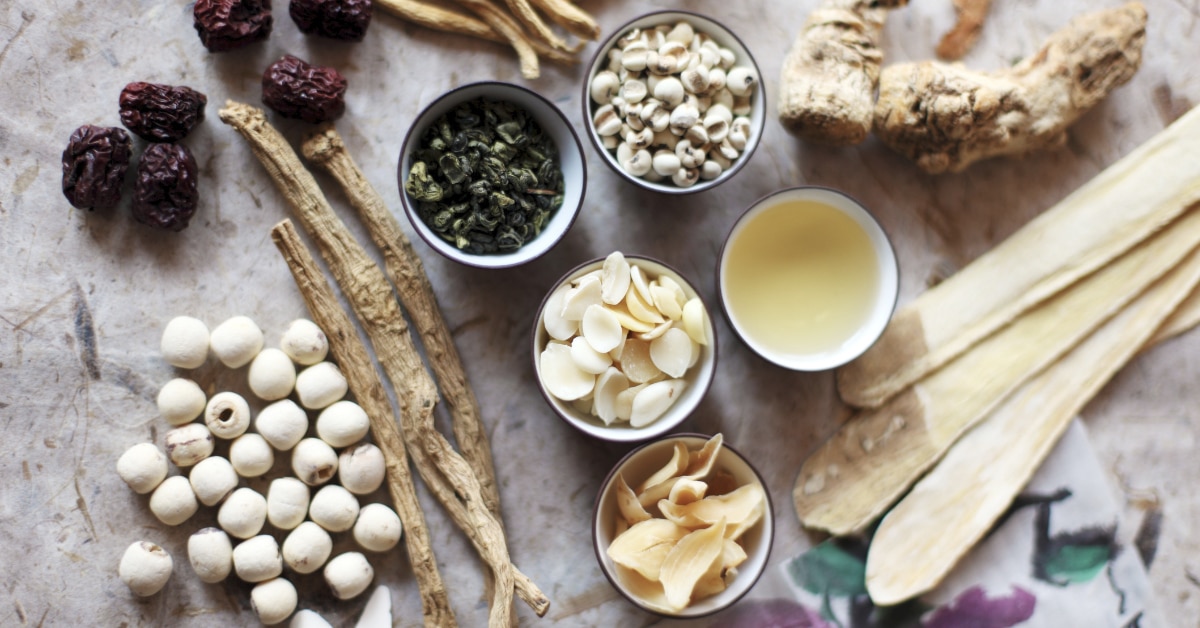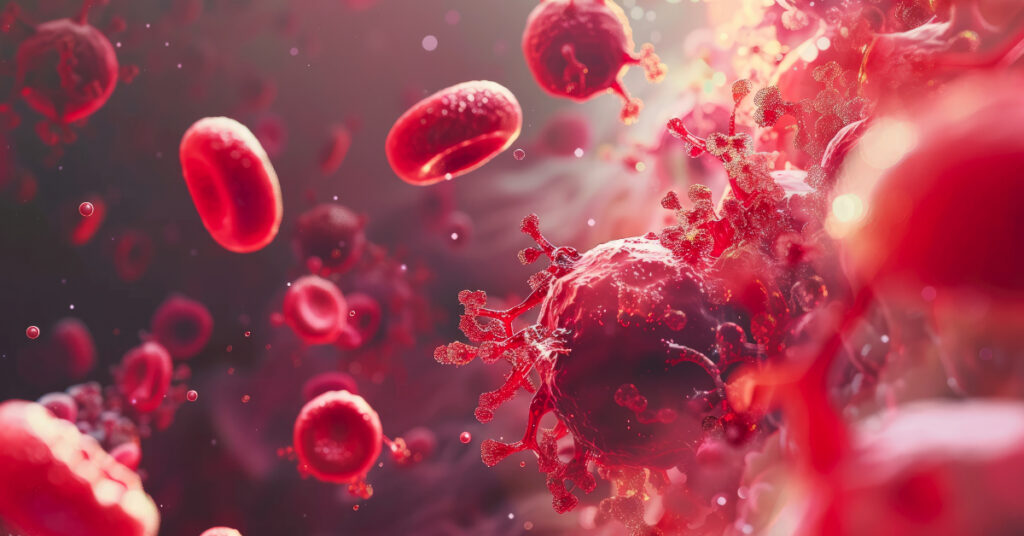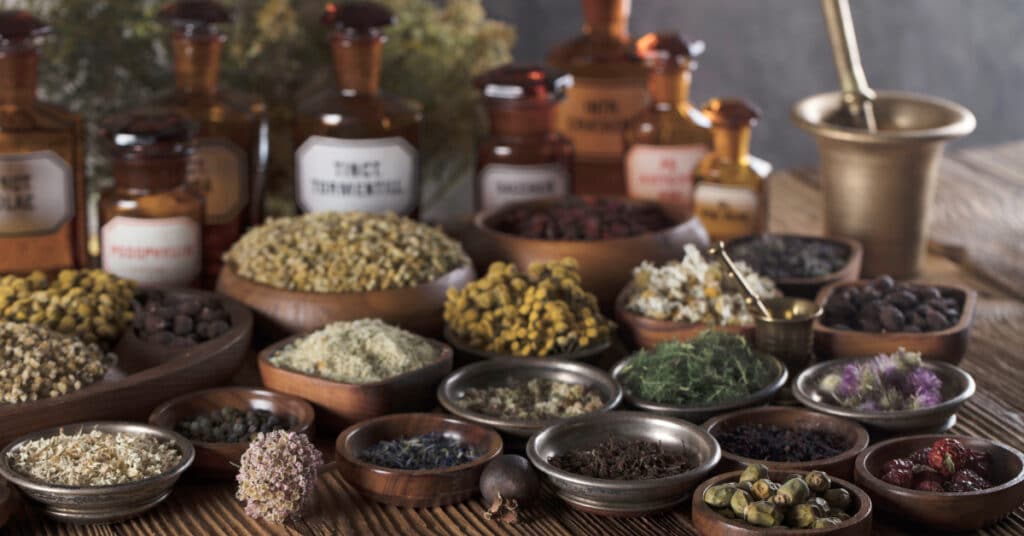The Healing Power of Nature
In the heart of a bustling city, amidst the sound of honking horns and hurried footsteps, there lies a quiet oasis – a serene park in the gentle embrace of nature. Here, beneath the dappled shade of towering trees and the soft rustle of leaves, stories of healing and resilience unfold, offering hope to those burdened by the weight of chronic pain.
Picture a weary traveler, their footsteps heavy with the weight of endless discomfort from fibromyalgia, or their spirit dimmed by the relentless ache of arthritis that seems to know no respite. Yet, amid the shadows of suffering, a ray of light beckons—a whisper carried on the breeze, promising relief and renewal through the healing touch of nature’s remedies.
Join us on a journey beyond the confines of conventional medicine, where we explore the transformative power of natural chronic pain relief. As we traverse through verdant landscapes and delve into the depths of scientific inquiry, let us uncover the hidden treasures that lie waiting to soothe the weary soul and restore vitality to the body.
The Burden of Chronic Pain
Before we embark on our exploration, let us first grasp the staggering impact of chronic pain on individuals and societies worldwide. According to the Centers for Disease Control and Prevention (CDC), chronic pain affects approximately 20.4% of adults in the United States alone, amounting to over 50 million individuals enduring daily discomfort and diminished quality of life.
The toll of chronic pain extends far beyond physical discomfort, permeating every aspect of daily existence – from relationships and employment to mental health and overall well-being. Moreover, the economic burden of chronic pain is staggering, with the Institute of Medicine (IOM) estimating the annual cost in the US to range from $560 billion to $635 billion, encompassing healthcare expenses, lost productivity, and disability-related costs.
Conventional Approaches vs. Natural Remedies
Traditionally, the management of chronic pain has revolved around pharmaceutical interventions, ranging from over-the-counter analgesics to potent opioids. While these medications can provide temporary relief, they often come with a host of adverse effects and potential risks, including addiction, tolerance, and overdose.
Amidst growing concerns surrounding the overreliance on pharmaceuticals, there has been a resurgence of interest in natural remedies for chronic pain relief. Drawing upon centuries of traditional wisdom and contemporary scientific research, a diverse array of natural approaches has emerged, offering promising avenues for alleviating pain.

Heat & Cold Therapy Soothes Aches, Calming the Storm
In cozy homes and wellness retreats, individuals turn to the therapeutic embrace of heat and cold therapy to ease their chronic pain. Whether through warm compresses, heating pads, or cold packs, these simple yet effective modalities offer immediate relief by reducing inflammation, soothing sore muscles, and numbing painful sensations.
According to a review published in the Cochrane Database of Systematic Reviews, heat therapy, in the form of hot packs or warm baths, can significantly reduce pain intensity and improve physical function in individuals with chronic low back pain.
Physical Therapy & Exercise Strengthens the Body, Providing Natural Chronic Pain Relief
In rehabilitation centers and fitness studios, physical therapists guide individuals on a journey of healing and restoration. Through targeted exercises, stretching routines, and manual techniques, physical therapy offers a multifaceted approach to managing chronic pain by improving mobility, strength, and flexibility.
According to a meta-analysis published in the Journal of Orthopaedic & Sports Physical Therapy, exercise therapy is effective in reducing pain and improving physical function in individuals with chronic low back pain.

Mind-Body Practices for Harmony & Resilience
In the stillness of the early morning, practitioners of mind-body disciplines gather to cultivate inner peace and resilience. From the graceful movements of tai chi to the meditative practices of yoga and qigong, these ancient traditions offer holistic approaches to managing chronic pain by harmonizing the body, mind, and spirit.
Research published in the Annals of Internal Medicine suggests that mind-body practices such as yoga and tai chi can significantly reduce pain intensity and improve physical function in individuals with chronic low back pain and fibromyalgia.
In addition to wellness of mind, these practices also serve to stretch tight ligaments and strengthen muscles – particularly the core.
Acupuncture to Restore Balance & Vitality
In the bustling streets of China, healers skilled in the art of acupuncture wield slender needles with precision and grace, restoring balance and vitality to those plagued by chronic pain. Rooted in traditional Chinese medicine, acupuncture involves the insertion of fine needles into specific points on the body to stimulate energy flow and promote healing.
Numerous studies have demonstrated the efficacy of acupuncture in relieving chronic pain, with research published in JAMA Internal Medicine indicating that acupuncture is more effective than standard care for conditions such as osteoarthritis, migraines, and chronic back pain.
Nutrition Nourishes the Body, Easing Strain
In the aisles of grocery stores and farmers’ markets, a wealth of nutrient-rich foods awaits, offering sustenance and healing to those grappling with chronic pain. While the link between diet and pain management is complex and multifaceted, emerging research suggests that certain dietary patterns and supplements can play a significant role in alleviating pain and inflammation.
According to a systematic review published in the National Library of Medicine, dietary interventions such as the Mediterranean diet, rich in fruits, vegetables, whole grains, and healthy fats, may help reduce pain severity and improve physical function in individuals with chronic pain conditions.
A quote from Hippocrates, the father of modern medicine, “Our food should be our medicine and our medicine should be our food”.
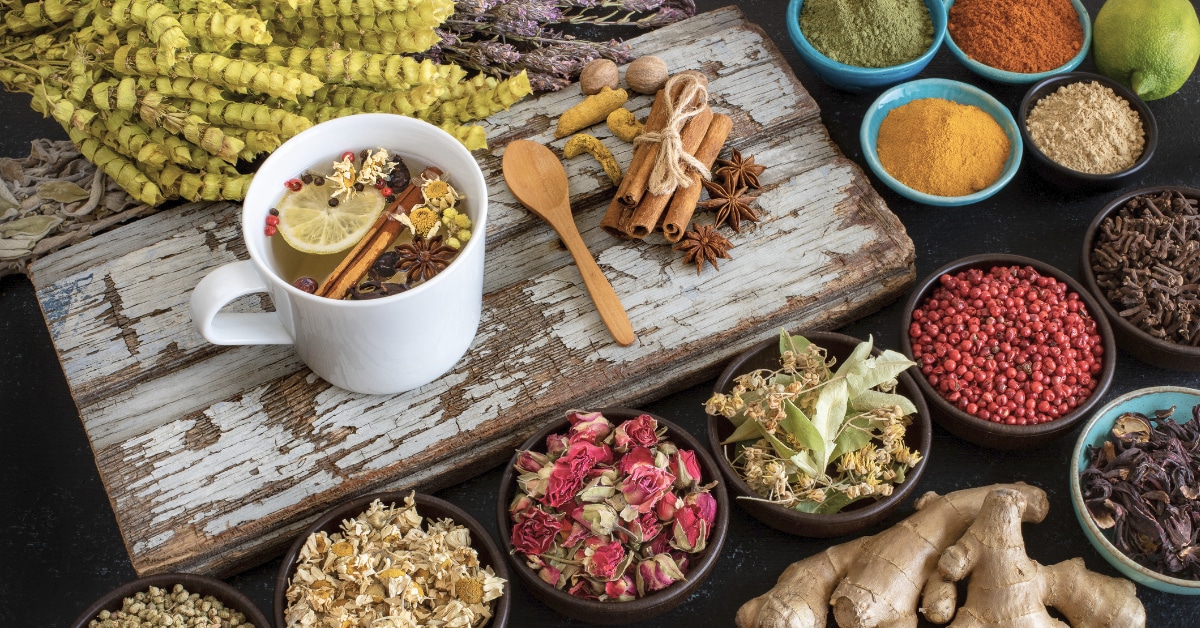
Harness the Potent Power of Botanicals
In the verdant meadows and forested glades, nature’s pharmacy awaits, offering a treasure trove of botanical remedies for chronic pain. From the fiery hues of ginseng and turmeric to the delicate petals of chamomile and lavender, herbs and botanicals have long been revered for their analgesic and anti-inflammatory properties.
According to a systematic review published in the Journal of Ethnopharmacology, several herbal remedies, including Ginseng, Turmeric, and Japanese Knotweed, have demonstrated efficacy in reducing pain and inflammation associated with conditions such as osteoarthritis and rheumatoid arthritis.
Panax Ginseng
In the serene forests of East Asia, panax ginseng emerges as a healer in the realm of natural chronic pain relief.
This potent adaptogenic herb, cherished for centuries in traditional Chinese medicine, holds within its roots a wealth of therapeutic compounds that offer respite from chronic pain.
Ginsenosides, the active constituents found in panax ginseng, possess powerful anti-inflammatory and analgesic properties, making it a valuable ally for those seeking relief from chronic pain conditions such as arthritis, neuropathy, and migraines.
Scientific research supports the efficacy of panax ginseng in reducing pain sensitivity, improving physical function, and enhancing overall well-being.
Whether consumed as a tea, tincture, or dietary supplement, ginseng embodies the timeless wisdom of nature, offering solace and renewal to weary souls on their journey towards healing.
Possible Side Effects
While Panax ginseng is generally well-tolerated, some individuals may experience side effects such as:
Insomnia: Ginseng is known to have stimulating effects, which may interfere with sleep patterns, especially if taken in large doses or close to bedtime.
Digestive Issues: Some people may experience gastrointestinal discomfort, such as nausea, diarrhea, or stomach upset, particularly when first starting to use ginseng.
Changes in Blood Pressure: Ginseng may affect blood pressure levels, so individuals with high blood pressure should monitor their levels closely when using ginseng supplements.
Curcumin (Turmeric)
Curcumin, the active compound found in turmeric, emerges as a potent ally in the realm of natural chronic pain relief.
Revered for centuries in traditional medicine practices such as Ayurveda, curcumin possesses remarkable anti-inflammatory and analgesic properties, making it a valuable remedy for alleviating chronic pain.
Scientific studies have highlighted curcumin’s ability to inhibit inflammatory pathways, reducing pain and swelling associated with conditions such as arthritis, fibromyalgia, and inflammatory bowel disease.
Curcumin’s antioxidant properties help protect cells from oxidative damage, which can contribute to pain and inflammation.
Whether consumed as a dietary supplement or incorporated into culinary creations, curcumin offers a gentle yet effective approach to managing chronic pain, harnessing the healing power of nature to restore balance and vitality to the body.
Possible Side Effects
Curcumin is generally well-tolerated, but some people may experience side effects such as:
Gastrointestinal Issues: Curcumin may cause gastrointestinal symptoms such as stomach upset, diarrhea, or nausea, especially when taken in high doses.
Blood-Thinning Effects: Curcumin may have mild blood-thinning effects, so individuals taking blood-thinning medications or with bleeding disorders should use caution and consult with a healthcare professional before using curcumin supplements.
Interactions with Certain Medications: Curcumin may interact with certain medications, including blood thinners, antiplatelet drugs, and medications metabolized by the liver. It’s essential to speak with a healthcare provider before using curcumin supplements, especially if taking other medications.
Japanese Knotwood (Resveratrol)
Japanese Knotweed, a plant native to East Asia, holds promise as a natural remedy for chronic pain relief. Rich in bioactive compounds such as resveratrol, quercetin, and emodin,
Japanese Knotweed exhibits potent anti-inflammatory and analgesic properties, making it a valuable ally in the management of chronic pain conditions.
Studies have shown that resveratrol, in particular, can help reduce pain and inflammation by inhibiting inflammatory pathways and modulating immune responses.
Quercetin acts as a natural antihistamine and antioxidant, helping to alleviate pain associated with allergies, inflammation, and oxidative stress. Emodin, another bioactive compound found in Japanese Knotweed, has been shown to have analgesic effects by targeting pain receptors in the body.
By harnessing the therapeutic potential of Japanese Knotweed, individuals suffering from chronic pain can find relief in nature’s pharmacy, paving the way towards greater well-being and vitality.
Possible Side Effects
Japanese Knotweed is generally considered safe when consumed in moderation, such as in culinary dishes or as a dietary supplement. However, like any herb or supplement, there are potential side effects and considerations to be aware of:
Allergic Reactions: Some individuals may be allergic to Japanese Knotweed or plants in the same family (Polygonaceae), which could result in symptoms such as itching, rash, or difficulty breathing.
Gastrointestinal Issues: In some cases, consumption of Japanese Knotweed may lead to gastrointestinal discomfort, including stomach upset, diarrhea, or nausea, particularly if taken in large doses.
Interaction with Medications: Japanese Knotweed contains compounds that may interact with certain medications, such as blood thinners (anticoagulants) or medications for high blood pressure. It’s essential to consult with a healthcare professional before using Japanese Knotweed supplements, especially if taking other medications.
Oxalate Content: Japanese Knotweed contains high levels of oxalates, which can contribute to the formation of kidney stones in susceptible individuals. Those with a history of kidney stones or kidney disease should exercise caution when consuming Japanese Knotweed.

ProleevaMax Combines Essential Amino Acids with Anti-Inflammatory Botanicals for All-Natural Chronic Pain Relief
Our product was formulated to address the underlying dietary and amino acid deficiencies that are commonly associated with chronic pain and inflammatory disorders. The chemicals in our brain, also known as neurotransmitters, are responsible for how we experience pain. These neurotransmitters are only kept in check by having healthy levels of amino acids but, if your body is deprived, you are more at risk of experiencing pain and inflammation.
Replenishing essential nutrients like Choline Bitartrate, L-Arginine, and Gamma-Aminobutyric Acid (GABA) can be instrumental in chronic pain relief by addressing underlying biochemical imbalances and supporting the body’s natural mechanisms for pain management.
Choline Bitartrate, a precursor to acetylcholine, a neurotransmitter involved in muscle control and pain perception, plays a crucial role in nerve signaling and muscle function. Adequate levels of choline can help maintain nerve health and reduce neuropathic pain associated with conditions like diabetic neuropathy and fibromyalgia.
L-Arginine, an amino acid, serves as a precursor to nitric oxide, a molecule that regulates blood flow and inflammation. By promoting vasodilation and improving circulation, L-Arginine may help alleviate pain associated with conditions such as peripheral artery disease and chronic tension headaches.
Additionally, Gamma-Aminobutyric Acid (GABA), an inhibitory neurotransmitter, plays a key role in modulating pain signaling and promoting relaxation. Low levels of GABA have been implicated in conditions like fibromyalgia and chronic stress, and replenishing GABA levels through supplementation or relaxation techniques may help reduce pain sensitivity and improve overall well-being.
By replenishing these essential nutrients and harnessing the anti-inflammatory power of Panax Ginseng, Curcumin, and Japanese Knotwood (Resveratrol), individuals with chronic pain can support their body’s natural pain-relief mechanisms, enhancing their quality of life.
Natural Chronic Pain Relief is Out There
In the tapestry of life’s unfolding journey, chronic pain serves as a poignant reminder of our shared vulnerability and resilience. Yet, amidst the shadows of suffering, there exists a beacon of hope – a gentle reminder that healing is not merely an act of overcoming but a journey of rediscovery and transformation.
As we navigate the paths of chronic pain, let us remember that relief lies in the embrace of holistic healing and well-being. By harnessing the transformative power of nature’s remedies and embracing a multidimensional approach to pain management, we can tread the path towards greater vitality, resilience, and joy.
In the embrace of nature’s healing touch, may we find solace, strength, and renewal, and may our journey towards natural chronic pain relief be guided by compassion, curiosity, and a deep reverence for the interconnectedness of all life.
Learn more about how ProleevaMax works and story behind our product.
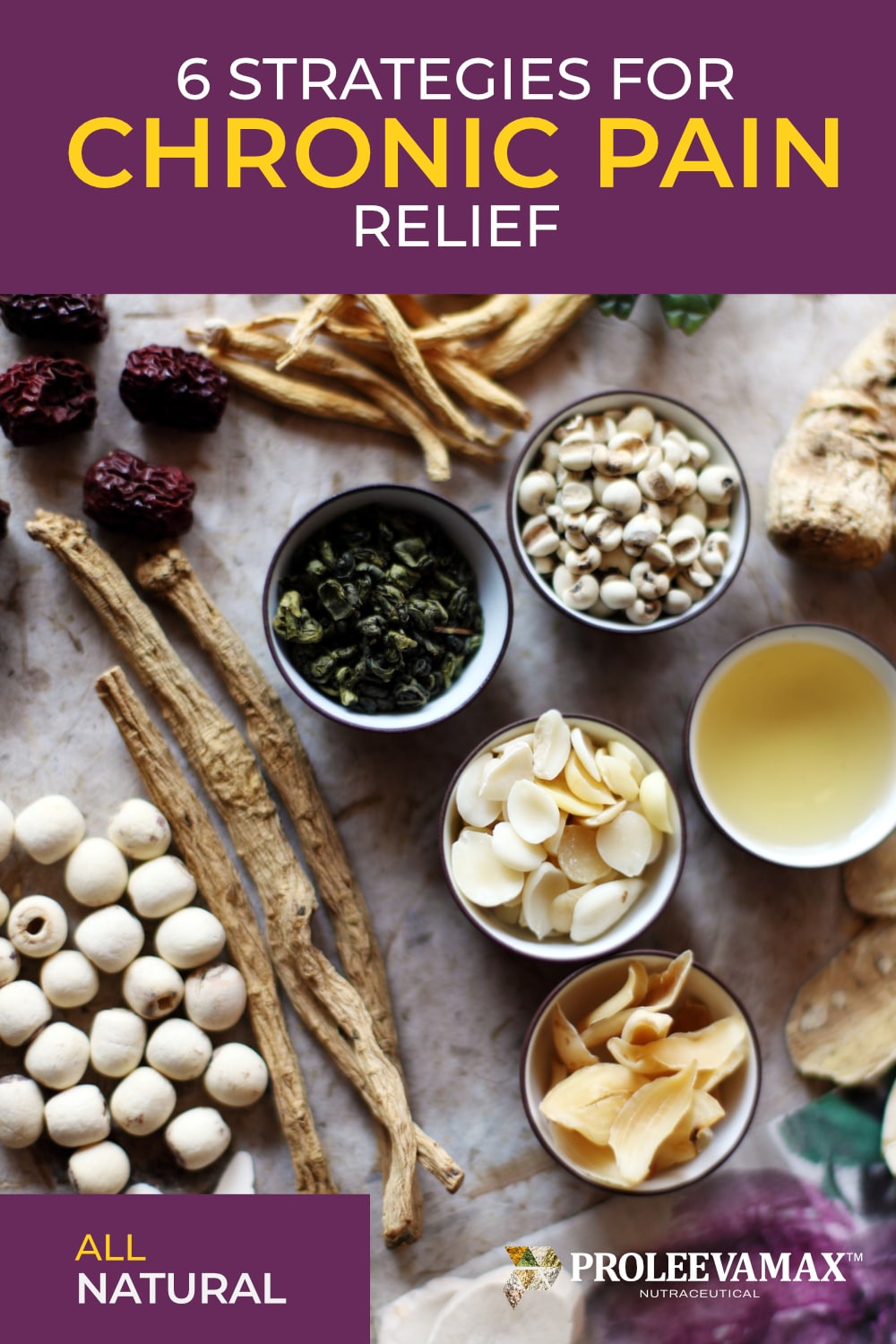
Sources
Centers for Disease Control and Prevention (CDC)
Institute of Medicine (IOM)
Journal of Ethnopharmacology
Annals of Internal Medicine
JAMA Internal Medicine
Journal of Orthopaedic & Sports Physical Therapy
Journal of Pain Research
Cochrane Database of Systematic Reviews


